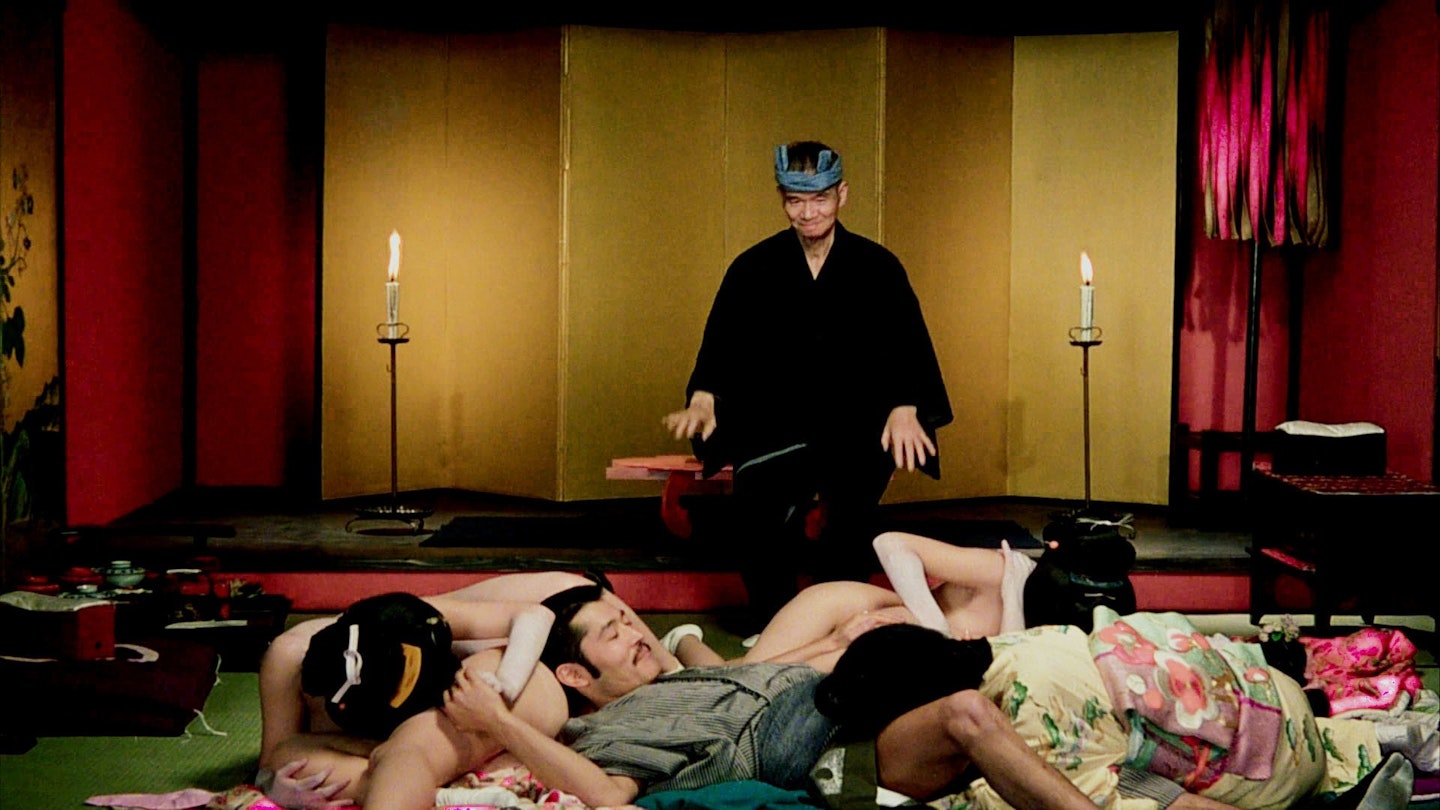Throughout his career, Nagisa Oshima had used actual events to confront contentious issues (like the racial mistreatment of Koreans in Death By Hanging, 1968) and this cause célèbre was inspired by the story of Sada Abe, who in 1936 was jailed for the murder of her lover after she was found wandering the streets with his severed penis tucked into her kimono. However, the sheer fact that she committed this `ecstatic gesture of individual liberation' and received only a six-year sentence at a time of militaristic intransigence and moral conformism led to her becoming a folk heroine.
By showing how Sada assumed the dominant role in her relationship with the socially superior Kizicho, Oshima intended to question how far the reversal of male totalitarianism had progressed in the intervening 40 years. Yet it was not the film's bold political stance that earned it notoriety, but its graphic depiction of penetrative sex. Despite blocking out all images of pubic hair (to meet the strict censorship regulations that had forced the director to have the negative processed in Paris), Oshima was charged with obscenity and spent four years arguing his case before the courts.
There's no denying that the pair make love with obsessive compulsion in private and in public, sitting and standing, smoking and eating, singing and strangling. Yet, Oshima records their actions with a documentary detachment that gradually reveals the desperation of their coupling, as what they initially saw as their only release from a world of regimented repression becomes increasingly ritualistic and leaves them with only one, drastic escape from such intolerable pleasure.
There's undoubted sensuality and sensitivity here. But Oshima also mines Kabuki theatre, classical prints and the long-established traditions of voyeurism, exploitation and sado-masochism in Japanese pornography to expose the brutality, cowardice and hypocrisy of the nation's recent history..
